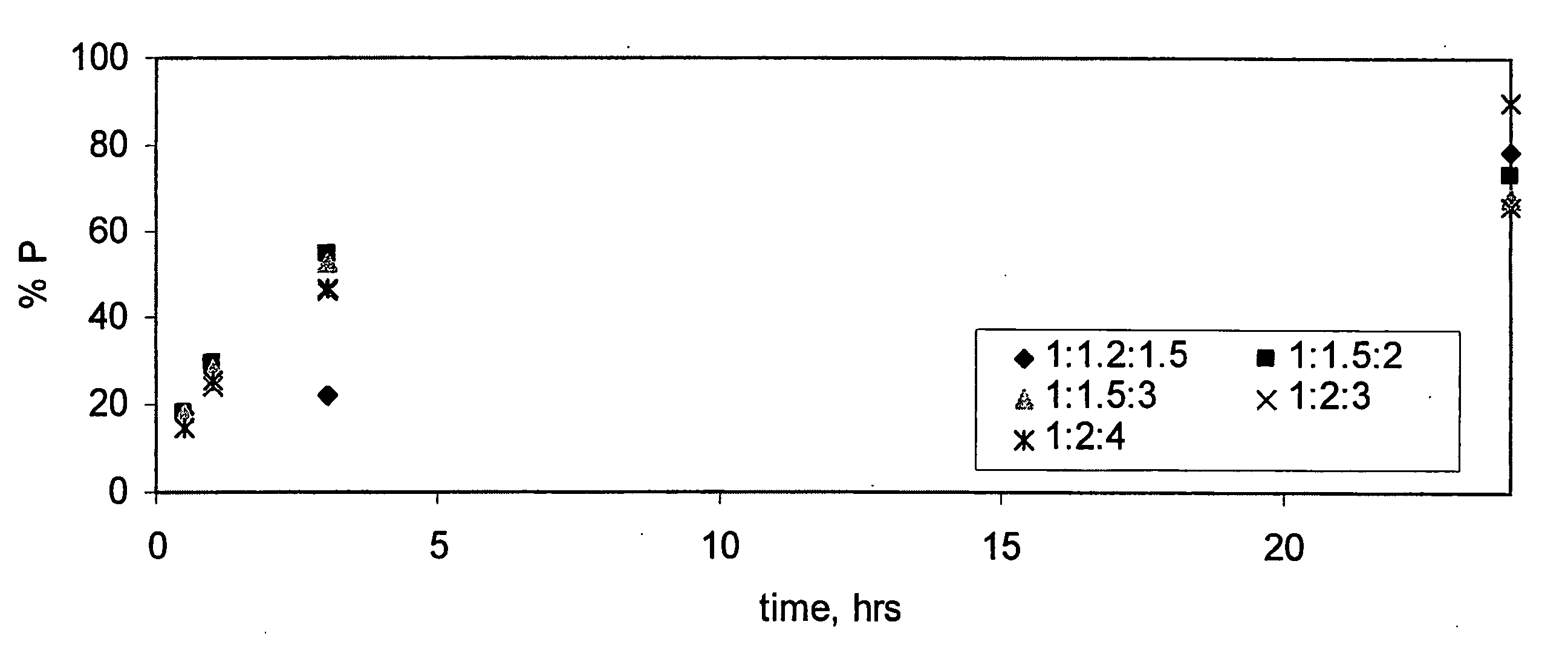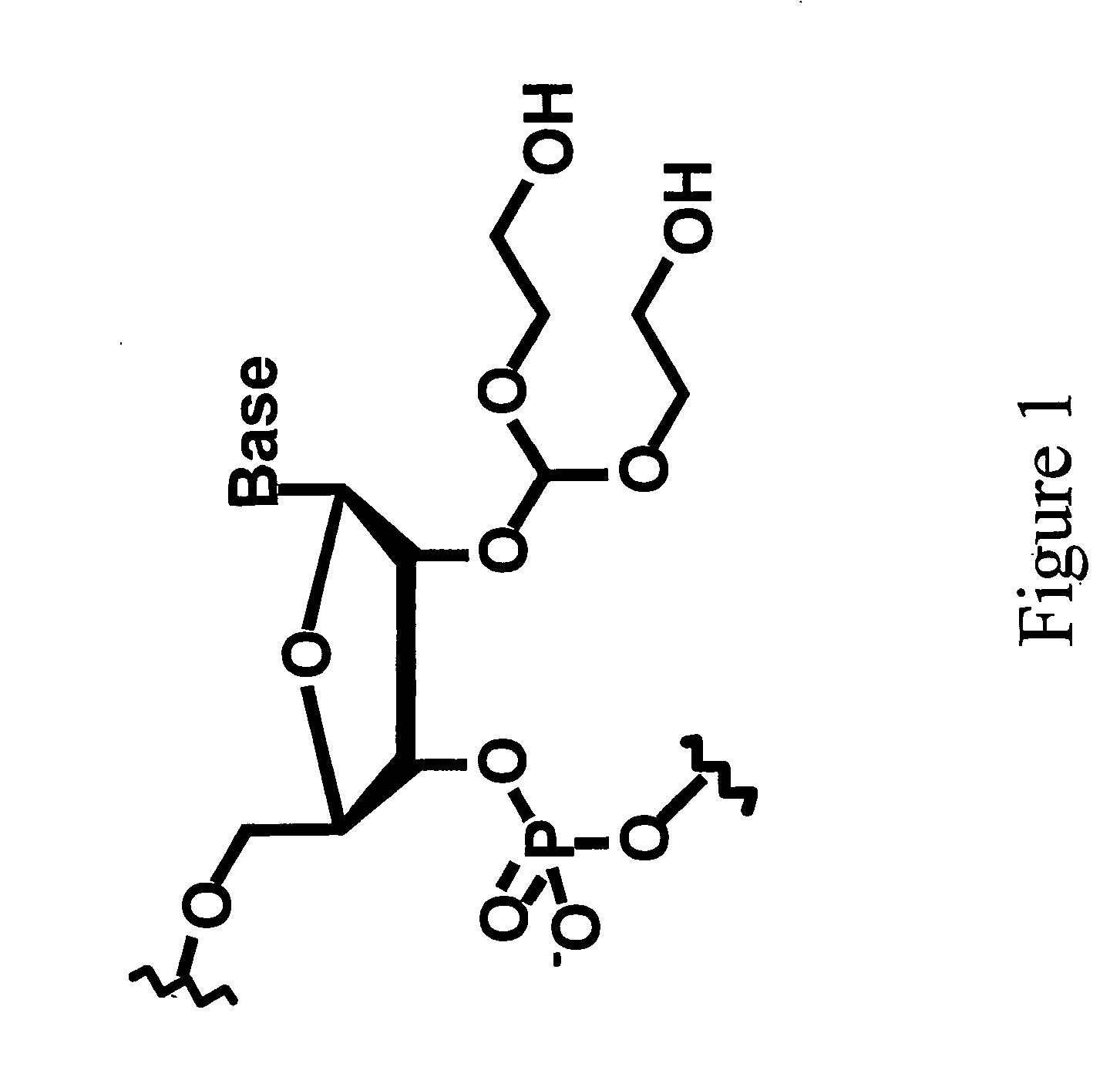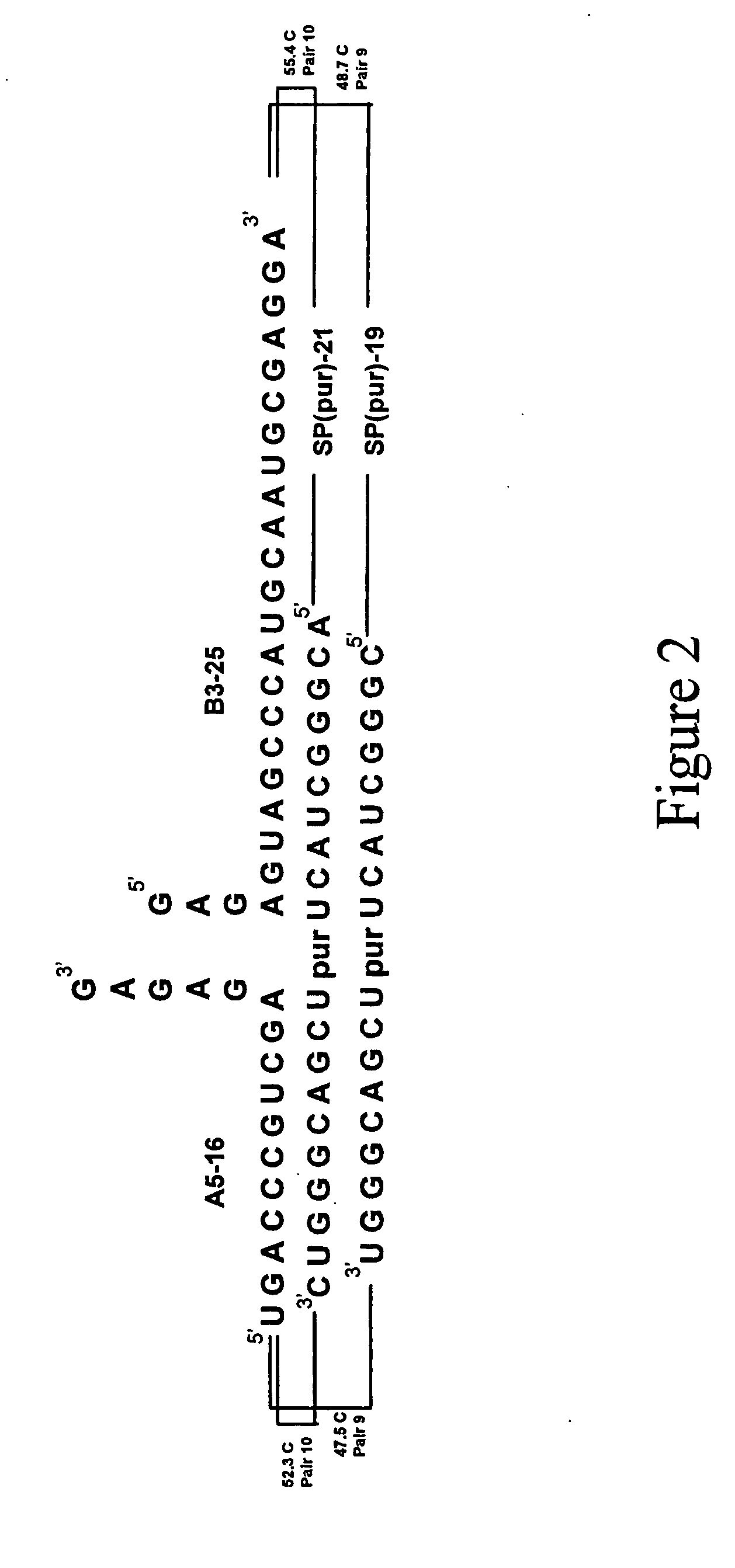Splint-assisted enzymatic synthesis of polyribounucleotides
a ribounucleotide and enzymatic synthesis technology, applied in the field of enzymatic rna synthesis, can solve the problems of difficult synthesis of rnas as long as 100 or more base pairs, difficult synthesis of rnas, and difficult design of polymerase catalyzed transcription, etc., and achieve the effect of ligating rna molecules
- Summary
- Abstract
- Description
- Claims
- Application Information
AI Technical Summary
Benefits of technology
Problems solved by technology
Method used
Image
Examples
example 1
[0097] Oligonucleotides were prepared using the 2′-ACE method on modified Applied Biosystems 380B synthesizers, using standard amidites. All HPLC was performed on Waters chromatography systems with DNA-PAC anion exchange columns at 55° C. Buffer A: 5 mM sodium perchlorate, 10 mM Tris, 5 M urea, 2% acetonitrile, pH 8.0. Buffer B: 300 mM NaClO4, 10 mM Tris, 5 M urea, 2% acetonitrile, pH 8.0. The gradient was (1.5 mL / min) 35-85% B from 3′-25′. Detection was at 260 mm.
[0098] T4 RNA Ligase was purchased from NEB (part M0204L). ATP (part A2,620-9) was purchased from Aldrich, while AMP (part 1752), inorganic pyrophosphate (part P-9146), and inorganic pyrophosphatase (part I-1643) were from Sigma. All other reagents and buffers were purchased from standard commercial sources.
[0099] Calculations of Tm for A:splint and B:splint pairings were performed using the Breslauer calculation found at: http: / / alces.med.umn.edu / rawtm.htl.(Breslauer, K J., Frank, R., Blocker, H....
example 2
Titrating ATP Concentration
[0103] In order to optimize ligation reaction conditions, reactions were run in which ATP concentrations were titrated at various concentrations of donor RNA, acceptor RNA, and splint polyribonucleotide. Two splints were used in these optimization reactions, denoted splint 21 and splint 19. These splints are illustrated in FIG. 2. The results of the optimization reactions are shown in FIGS. 3A and 3B.
[0104] At 50 μM A, reactions run with splint 21 cleanly afforded a single product that co-eluted with 41-mer control. Reactions with splint 19 gave a mixture of products: the desired product in 66%, and minor products of 7%, 5%, and 22%. ATP concentration at or above 1 eq had no effect on this outcome. At 100 μM A, reactions using either splint were observed to provide multiple products in roughly the same ratio. Again, ATP concentration had no effect. In all cases, ligase concentration was too low to be certain that reactions could reach completion faster t...
example 3
Ligase Concentration
[0107] Ligation reactions were optimized as to ligase concentration, by varying the concentration of T4 RNA ligase. Using 10 eq. of ATP, ligations of A, B, and splint 21 were conducted with varying concentrations of ligase. Results are illustrated in FIG. 4.
[0108] As is evident, the initial velocity increases as a function of ligase concentration until 0.6 U / μL, at which point no additional gain is observed. The extent of reaction did not proceed beyond approximately 60%.
[0109] The conclusion from these results is that the concentration of enzyme can be set as standard at 0.8 U / μL to afford an adequate rate of reaction. This finding does not preclude the use of other concentrations of RNA ligase.
PUM
| Property | Measurement | Unit |
|---|---|---|
| Tm | aaaaa | aaaaa |
| pH | aaaaa | aaaaa |
| Tm | aaaaa | aaaaa |
Abstract
Description
Claims
Application Information
 Login to View More
Login to View More - R&D
- Intellectual Property
- Life Sciences
- Materials
- Tech Scout
- Unparalleled Data Quality
- Higher Quality Content
- 60% Fewer Hallucinations
Browse by: Latest US Patents, China's latest patents, Technical Efficacy Thesaurus, Application Domain, Technology Topic, Popular Technical Reports.
© 2025 PatSnap. All rights reserved.Legal|Privacy policy|Modern Slavery Act Transparency Statement|Sitemap|About US| Contact US: help@patsnap.com



